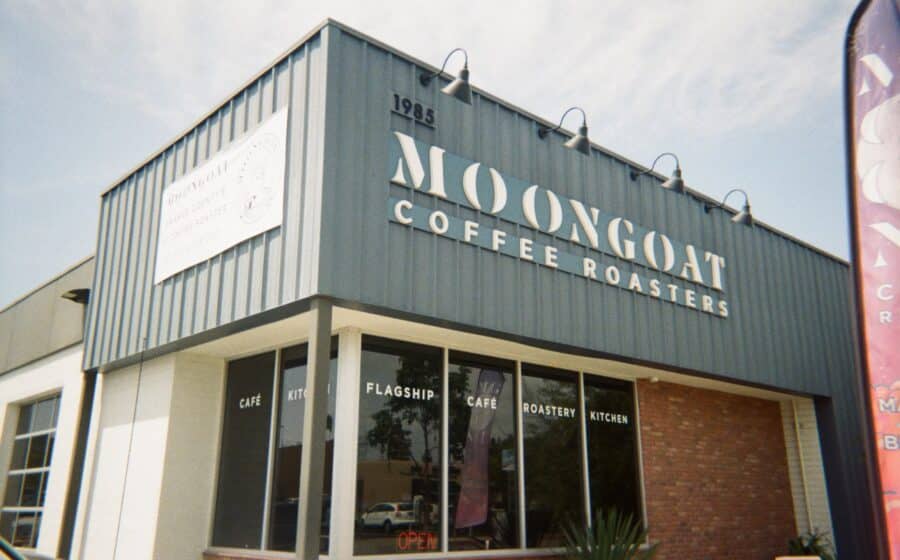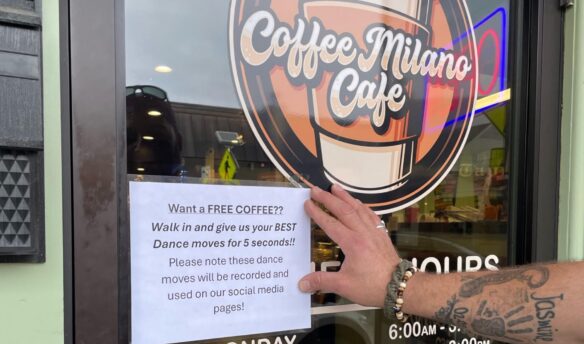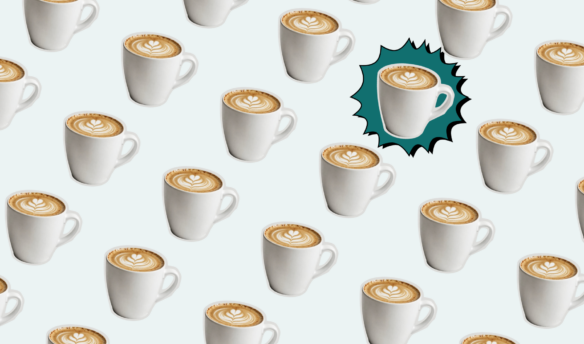Instagram has long since emerged as the go-to platform for coffee shops to connect with customers. Unlike static websites, Instagram allows brands to quickly and effortlessly communicate with customers—a last-minute change of hours or a new menu special can go out to followers within minutes. Yet, social media marketing has taken a whole new turn in recent years.
Gone are the days when racking up likes with snaps of latte art and pretty pictures was enough: Instagram Reels has completely changed the game. Within just two years of its launch, Reels claimed a whopping 30% of people’s time on the app. Now, it’s all about planning, scripting, and capturing dynamic moments on film to create compelling posts and videos.
Welcome to the new era of Instagram, where you have the power to direct your very own mini-movies to reach new customers, engagement is key, and building a loyal following involves more than just posting a few photos of latte art every few days. However, creating content that strikes a chord with your audience can be time-consuming, and figuring out what attracts customers through social media involves some trial and error.
Lights, Camera, Action
When Jillian Saldaña took over the social media marketing reins at MoonGoat Coffee Roasters, she had a clear goal: to elevate the coffee company’s online presence by tapping into her photography and copywriting background. Recognizing her limitations in video editing, Saldaña decided to translate her photography into video content for Reels by continuously clicking her camera to create stop-motion graphics and other animated shots.
Saldaña firmly believes video content is here to stay, and the integration of editing, captions, and music in videos appeals to users by engaging all of their senses. “There’s an essence about a video that makes someone feel like they’re there. A photo can make you feel like, ‘I wish I was there,’ but a video can make you feel like you’re there, without having to attend,” Saldaña says. “We’re so far in it now at this point—video just allows a different lens into something. It offers that motion that a still photo doesn’t.”
One notable advantage of producing Reels content for your coffee shop is its prolonged visibility. Unlike static photo posts on Instagram that typically stay on followers’ feeds for a few days, high-performing Reels have a lifespan that can often exceed two weeks. MoonGoat Coffee recently went viral with a Reel announcing the launch of their new Laguna Beach location—and the video still reached new users weeks after its initial posting.
The video, featuring quick clips of MoonGoat employees working and smiling as a voiceover gives details ahead of the location’s opening day, has consistently driven traffic to their social media page. “It’s still getting traction. We may not be getting as many comments, but we’re still getting likes, and people are still viewing it,” Saldaña says.
Rewind and Repeat
Despite the growing focus on video content, MoonGoat has also found success uploading photos as a carousel, or multiple images in one post (viewers can swipe to see each photo). Saldaña highlights the effectiveness of carousels in driving more views and clicks, as this format tends to reappear in the feed multiple times, with each slide displaying differently. “If someone is scrolling and sees the first photo from a carousel, but doesn’t like that photo, all of a sudden, the second photo will pop up from the same post,” she says. This strategy maximizes engagement by capturing the attention of users who may have missed or overlooked the initial post.
It might seem daunting to script multiple scenarios for Reels or compile photos for a photo dump—creating new content daily in a busy coffee shop isn’t always possible. Saldaña advises not to shy away from repeating yourself. When MoonGoat wanted to promote its cold drink menu, Saldaña saw the opportunity for maximum impact.
“We have a whole summer where it’s going to be hot outside—I’m not just going to post it one time,” she explains. “How can I take the same content and recycle it to get the most use out of it? Whether it’s with new imagery, a new video, or even the same pose with a can but using a different background.” The key is to find creative ways to squeeze every ounce of value from your content.
Increasingly, brands are embracing Reels and carousels not just to connect with existing followers but to broaden their reach and get noticed. With half of Instagram users seeking fresh content on the Explore page, it’s a prime spot for engagement. To make the most of this reach and develop an Instagram strategy that drives foot traffic, Saldaña suggests collaborating with your leadership teams to align their vision with upcoming promotions or events.
“Ask yourself very real questions. Does our audience even know this [promotion] exists? If not, how can I consistently keep this on the forefront or in our stories so people know it does?” Saldaña says. “How can I make it so it doesn’t drown out other things, but as well keep it apart from being just noise?”
A Winning Combination
When Reels were first introduced, Jacob Miller, the social media manager at Bold Bean Coffee Roasters in Jacksonville, Florida, began by sharing videos of coffee pours. However, he noticed a decline in engagement over time. Recognizing the need to adapt, Miller quickly pivoted to start sharing behind-the-scenes videos featuring the baristas with instant results—their engagement soared. “People really liked those,” Miller says. “I figured if I posted more of the baristas, and the stuff we say and do behind the counter, that would get much more engagement.”
Bold Bean’s videos feature a mix of content—from introducing new faces at the shops to baristas sharing their interests in a talking-head style and goofing around behind the counter. In one recent Reel, you can’t help but laugh as a barista with a shaky hand sets down a latte on the counter after testing espresso shots on an empty stomach. Another fun clip shows a barista chugging down coffee to gear up for the upcoming rush.
While Miller still features coffee pours and latte art, he taps into humor and Instagram trends to create entertaining content that has performed well on the app—and brings in more customers through the door. In the neighborhood surrounding the café, a recent Reel came to life. The camera followed Alex, a barista holding a cup of coffee, as she went on a mission to deliver an order to her elusive guest, Olivia. Strolling through the streets, Alex called out Olivia’s name at every corner, but the guest seems to have disappeared without a trace. The caption accompanying the Reel read: “Rumor has it Alex is still roaming the earth looking for Olivia.”
But it’s not always about videos at Bold Bean. Their Instagram features a mix of content types, including Twitter-style posts and funny photo edits. One particular Instagram post caused some controversy after sharing a tweet that said, “Tip your barista $20.00 today.” While Miller clarifies that it was intended as a joke, it unexpectedly sparked a debate about wages and tips in the comment section. Surprisingly, some customers showed their support by coming in and leaving $20 tips on their orders in solidarity with the post.
“A lot of people will come in just to tell us how much they like some of the Reels with the baristas because they’re such a large part of the shop,” Millers adds. “They’re the ones running it day-to-day and that’s who the customers see the most.”
While coffee shops like Bold Bean and MoonGoat receive anecdotal feedback about their social media presence, directly correlating foot traffic and café sales to Instagram marketing isn’t always easy. Unlike online purchases, measuring foot traffic involves people physically visiting shops, making it trickier to attribute directly to specific social media efforts. To gauge the impact of Instagram, both Saldaña and Miller rely on Square, a point-of-sale (POS) system that enables them to track drink sales and traffic. This data-driven approach gives them a clearer picture of how their Instagram efforts translate into tangible results.
After sharing specific promotions for MoonGoat on social media, Saldaña keeps tabs on sales through Square. “I can see from there if we had an increase in peach drink sales because that’s our flavor of the moment,” she says. Additionally, she pulls data from Shopify and email marketing to better understand customer behavior. “What are people actively clicking? Am I on the right track, or are they asking for something that I haven’t provided or posted about yet?”
Miller emphasizes the significance of customer feedback and preferences in evaluating the effectiveness of their social media strategy. “It’s important for me to know how the customers felt—what they said about our social media, what they were ordering, and if it correlates to what I was posting within this week,” Miller explains. He also recommends talking with your baristas to assess customer conversations and Instagram’s influence on café visits.
Saldaña agrees that engaging your baristas is vital. “We just did a post about our coffee catering, and afterward, I followed up with our team,” she says. “I can see the clicks and reshares from my end, but did we actually get tangible phone calls and inquiries?”
In the ever-changing world of Instagram marketing, coffee shops must strike a balance between creativity, data analysis, and customer engagement. By embracing trends, these shops can strengthen their online presence and thrive in Instagram’s competitive landscape, transforming online interactions into real-world success.










